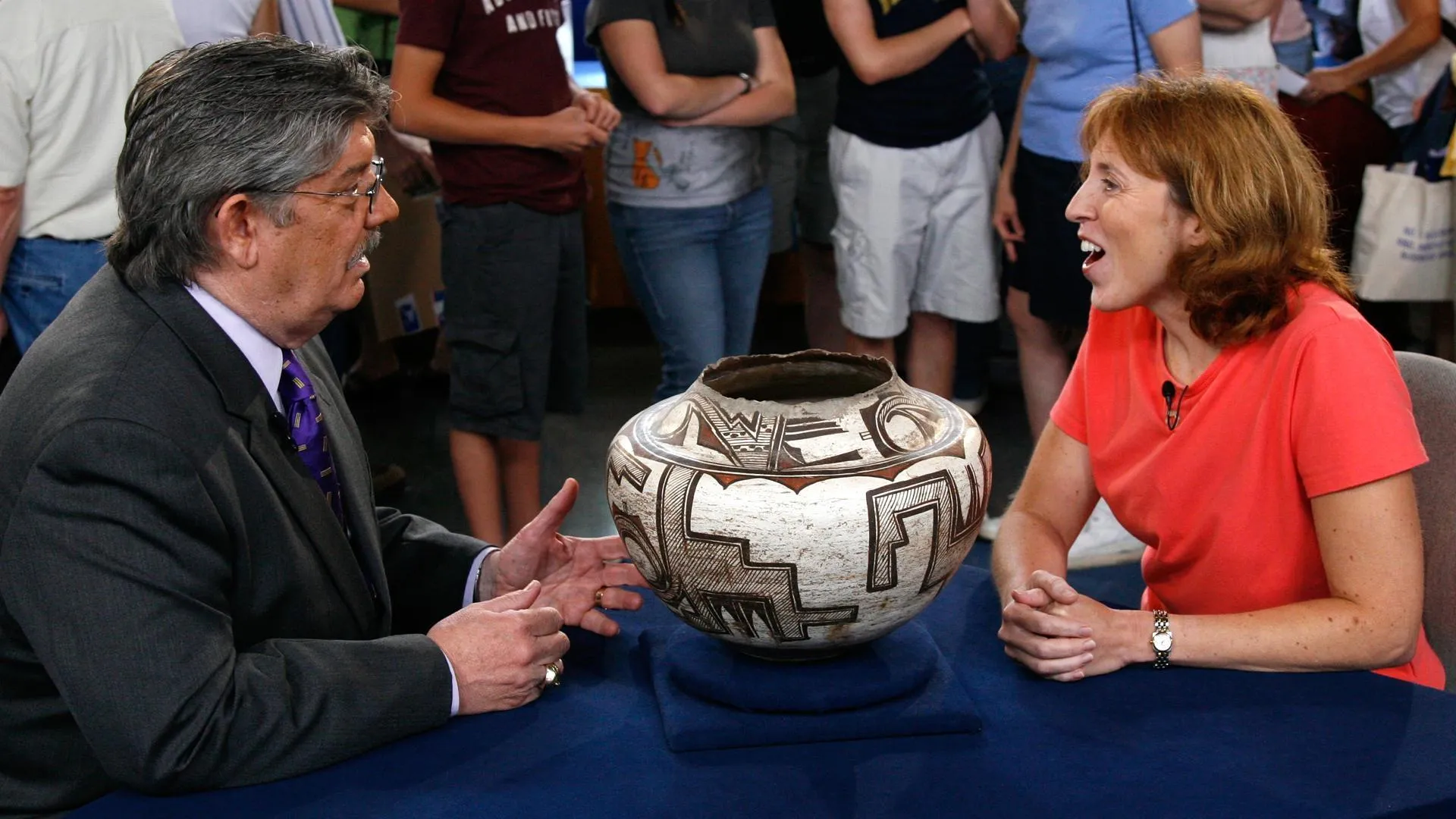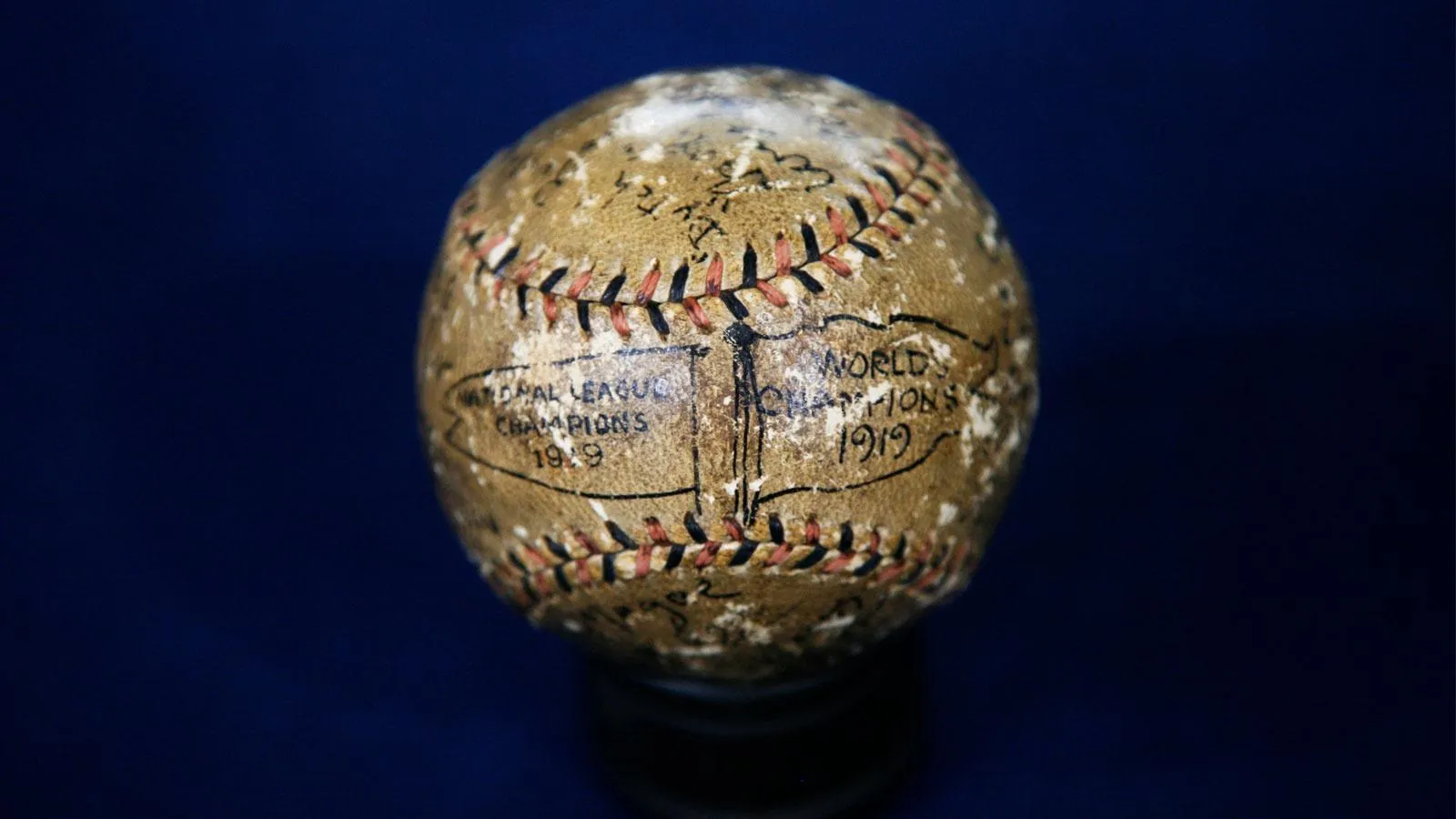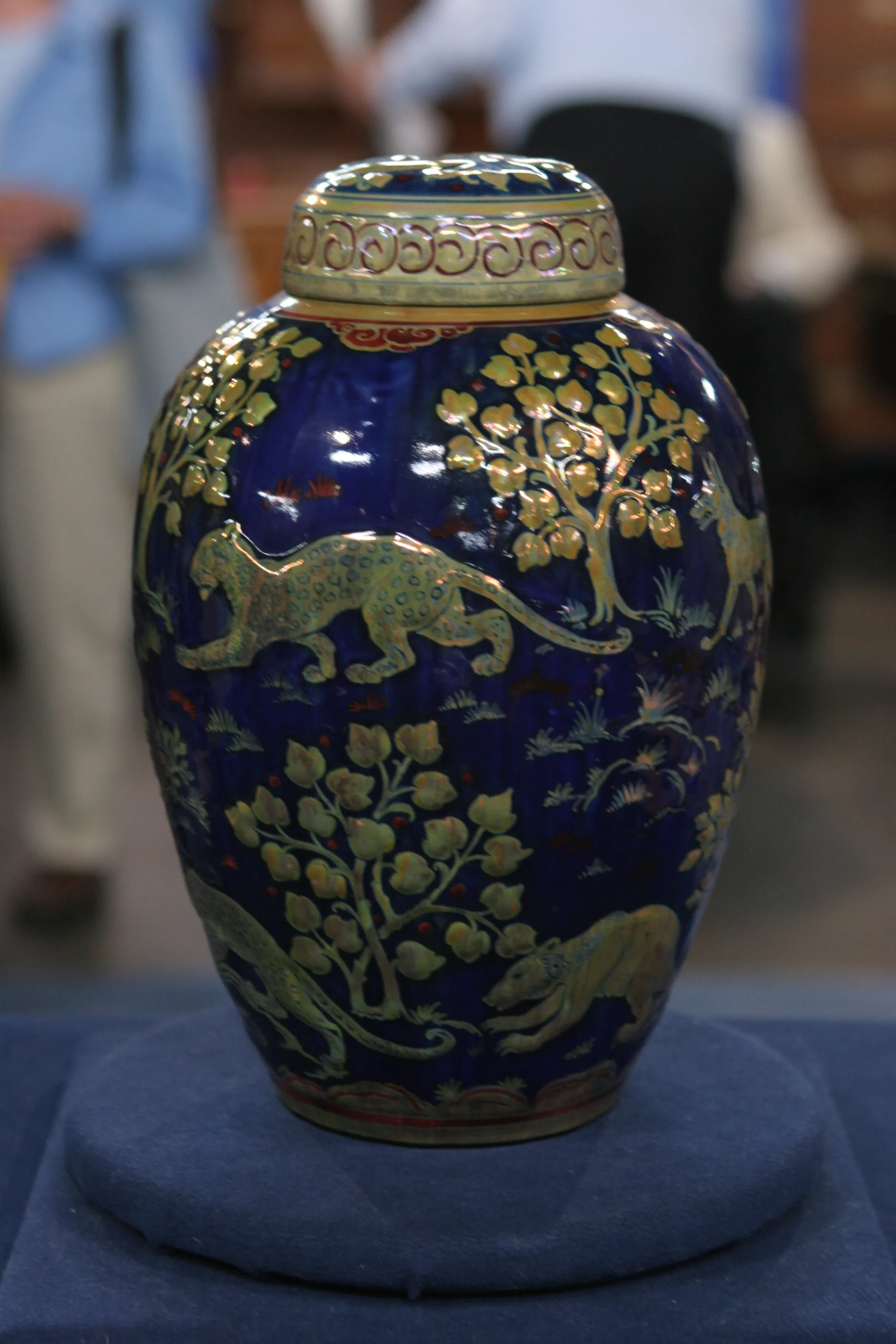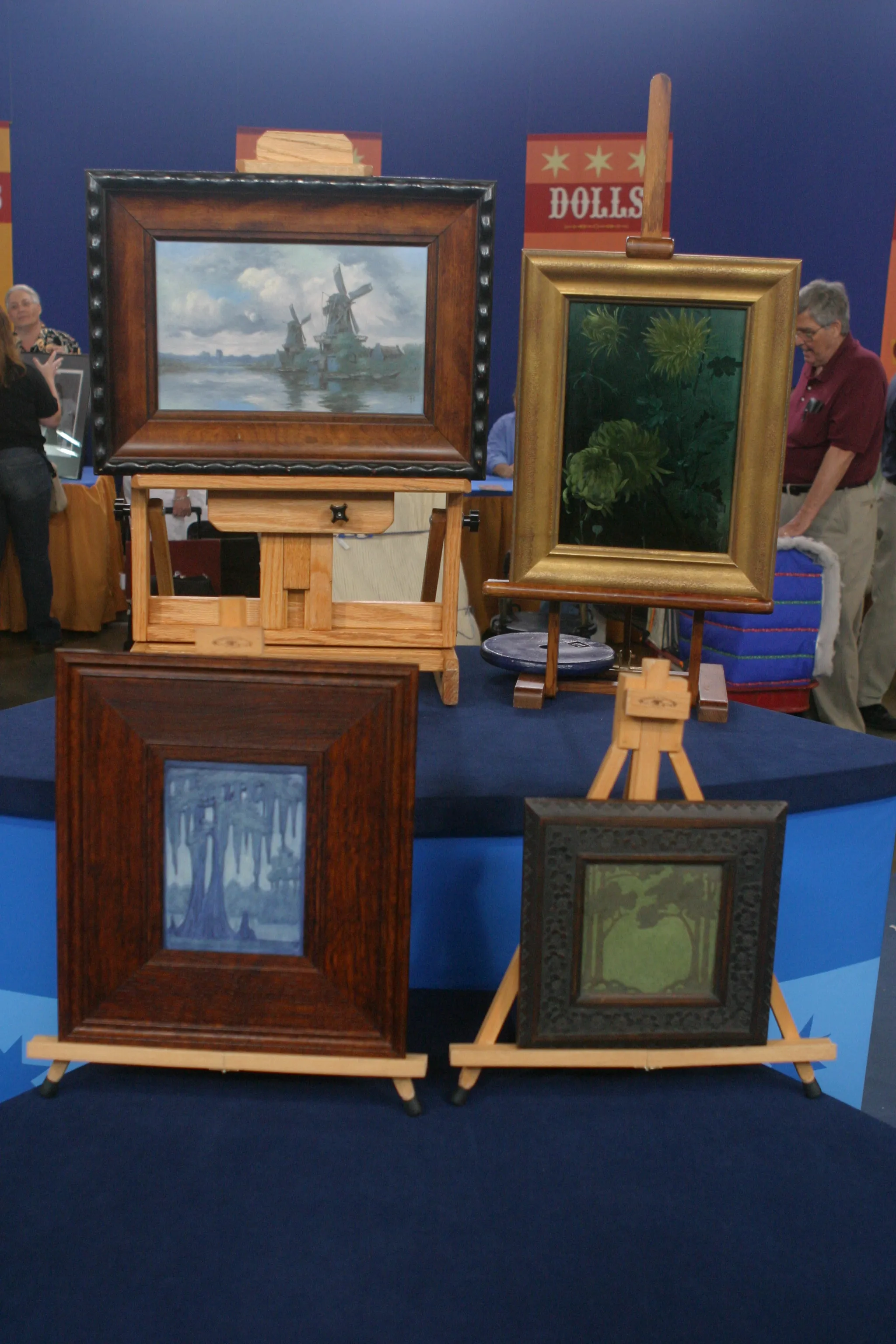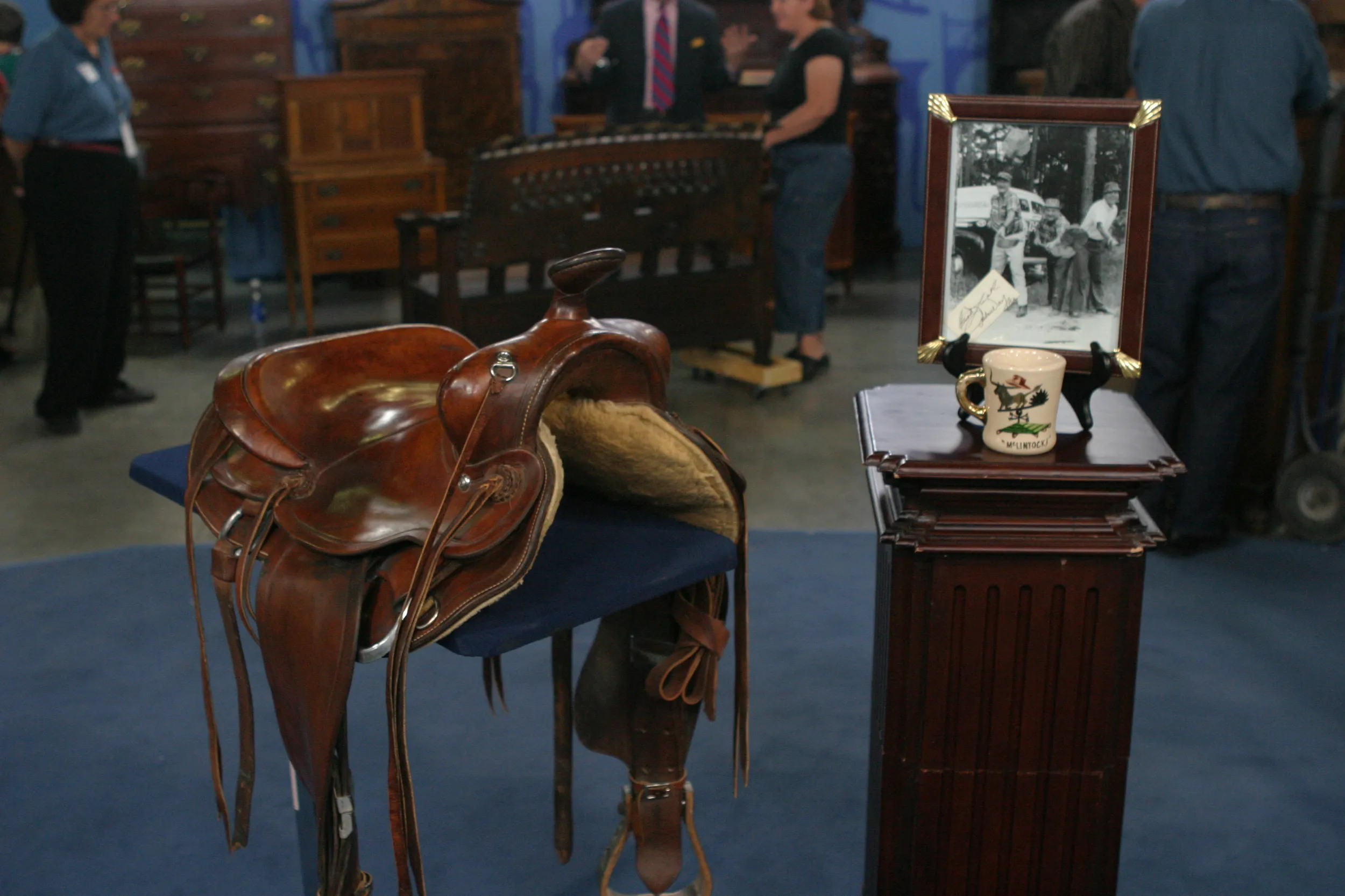GUEST: I have a friend who had birds in her attic, and she asked me to help her clean it out. She told me to throw everything out. And I decided that I'd go and ask her and make sure, because I saw some things up there. And she said, "No, it's all trash; throw it out." And so I kept this and a few other pieces.
APPRAISER: Was there any reason why you kept this one, or...?
GUEST: Not really. I just kind of liked it. It was kind of different and... It looked old, but I couldn't tell if it was old or not, so I wasn't sure.
APPRAISER: Do you know if she bought this?
GUEST: No, I don't think she bought it. I think that there were things that had been up there for a while, 'cause there was old newspaper articles in there with it, too, from, early, early newspaper articles, so...
APPRAISER: It's from New Mexico, and it's from a pueblo village near Santa Fe called Cochiti. And these figures were made strictly to sell to the tourists, and they started making them pretty early. This one was probably made 1890, 1900, right in there. It's hard to come up with an exact date. What's neat about this is, it's a full-size figure, the design on it's great, the birds on the front. And what I really like is the back. It's got this full pattern that goes all over it, and really has a nice design. The bad part is, the foot's broken. These have gotten real collectible, even though they're, like, tourist things. I mean, the, the Cochiti people stood beside the railroad track at the train station and sold these things for, like, a quarter. If this was to come up for sale at a gallery in Santa Fe, it would bring somewhere, $3,000 to $5,000.
GUEST (chuckling): You're kidding, right?
APPRAISER: No, I'm not kidding. And there are some bigger ones, but this is a great one. And, I mean, I'm even talking with the broken foot, it's worth that.
GUEST: Wow. It was a hot, sweaty day up there; I'm glad I did it now.
APPRAISER: Yeah. Paid off in the end, huh?
GUEST: It did. Thank you. I appreciate it.

